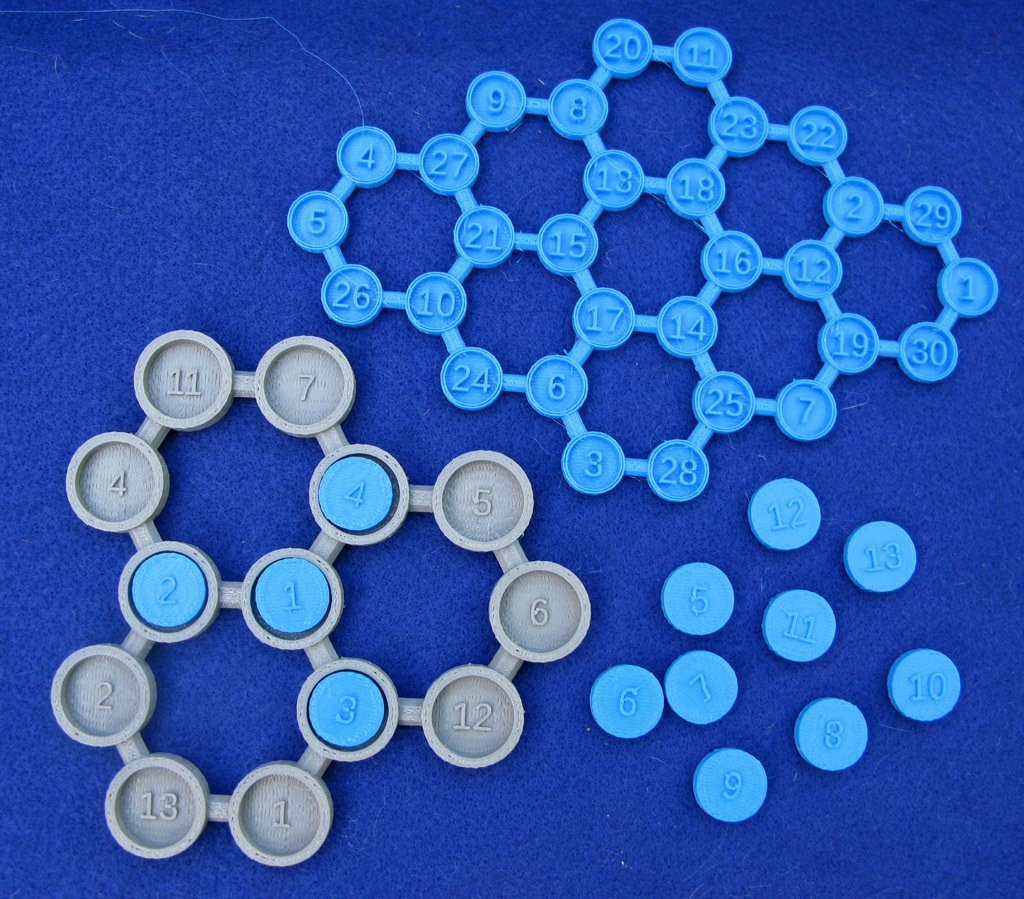
Simple Puzzle of Three Hexagons
thingiverse
A Simple Puzzle Based on the Hexagonal Tortoise Problem. The hexagonal tortoise problem was proposed by a Korean mathematician over three centuries ago. A hexagonal array with N vertices is given numbers from 1 to N, arranged so that the sum of the six integers at each hexagon's vertices is the same. The original "magic" tortoise pattern, containing nine hexagons, was published in 1700, and its sums are all 93. See https://en.wikipedia.org/wiki/Hexagonal_tortoise_problem. Tortoise.stl is a copy of this pattern, which can be used to verify the sums. Note that the central hexagon has consecutive numbering, hinting at its construction method. A solution to the eight-hexagon problem is clear in tortoise.stl. Remove vertices 1, 29, and 30, then adjust the integers on the remaining 27 vertices so they range from 1 to 27. The sums of the integers at hexagon vertices will now be 87. The puzzle, hex_puzzle.stl, consists of three hexagons with vertices numbered from 1 through 13. Solutions occur when the sums of the integers at each hexagon's vertices range from 34 to 50. A solution for the sum 43 is printed on the puzzle. Tokens labeled from 1 through 13 are provided. The task is to place these tokens in the puzzle and find solutions other than 43, especially 34 and 50. OpenSCAD code is included.
With this file you will be able to print Simple Puzzle of Three Hexagons with your 3D printer. Click on the button and save the file on your computer to work, edit or customize your design. You can also find more 3D designs for printers on Simple Puzzle of Three Hexagons .
